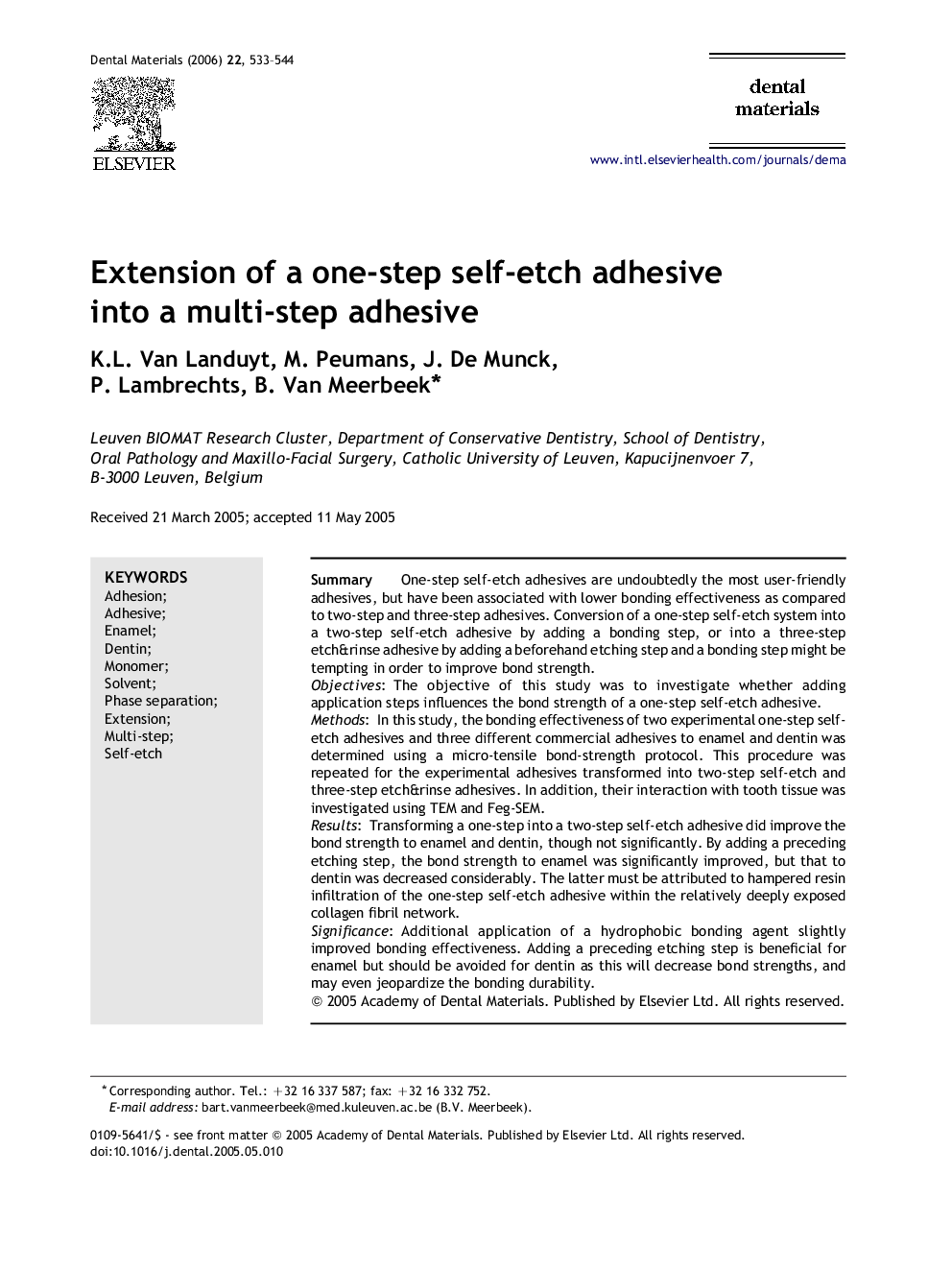| Article ID | Journal | Published Year | Pages | File Type |
|---|---|---|---|---|
| 1422778 | Dental Materials | 2006 | 12 Pages |
SummaryOne-step self-etch adhesives are undoubtedly the most user-friendly adhesives, but have been associated with lower bonding effectiveness as compared to two-step and three-step adhesives. Conversion of a one-step self-etch system into a two-step self-etch adhesive by adding a bonding step, or into a three-step etch&rinse adhesive by adding a beforehand etching step and a bonding step might be tempting in order to improve bond strength.ObjectivesThe objective of this study was to investigate whether adding application steps influences the bond strength of a one-step self-etch adhesive.MethodsIn this study, the bonding effectiveness of two experimental one-step self-etch adhesives and three different commercial adhesives to enamel and dentin was determined using a micro-tensile bond-strength protocol. This procedure was repeated for the experimental adhesives transformed into two-step self-etch and three-step etch&rinse adhesives. In addition, their interaction with tooth tissue was investigated using TEM and Feg-SEM.ResultsTransforming a one-step into a two-step self-etch adhesive did improve the bond strength to enamel and dentin, though not significantly. By adding a preceding etching step, the bond strength to enamel was significantly improved, but that to dentin was decreased considerably. The latter must be attributed to hampered resin infiltration of the one-step self-etch adhesive within the relatively deeply exposed collagen fibril network.SignificanceAdditional application of a hydrophobic bonding agent slightly improved bonding effectiveness. Adding a preceding etching step is beneficial for enamel but should be avoided for dentin as this will decrease bond strengths, and may even jeopardize the bonding durability.
